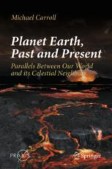Search
Search Results
-
Free-floating binary planets from ejections during close stellar encounters
The discovery of planetary systems beyond our Solar System has challenged established theories of planetary formation. Planetary orbits display a...

-
A radius valley between migrated steam worlds and evaporated rocky cores
The radius valley (or gap) in the observed distribution of exoplanet radii, which separates smaller super-Earths from larger sub-Neptunes, is a key...

-
Formation of rocky super-earths from a narrow ring of planetesimals
The formation of super-Earths, the most abundant planets in the Galaxy, remains elusive. These planets have masses that typically exceed that of the...

-
Observing Young Stellar Objects with the VLT Interferometer
Young stellar objects is one of the most exciting topic to be handled with the VLTI. The magnitudes of these stars are too high for current optical...
-
The Near Infrared and Optical Photometric Activity of V517 Cyg
AbstractA near infrared and optical photometric study of Herbig star V517 Cyg has been carried out. The infrared data were obtained in 2003–2017 at...

-
Prebiotic Evolution: The Self-Assembly of Primordial Biomolecules
Abiogenesis is a prebiotic evolution, an interacting network of primordial prebiomolecules. We can gain insight into how this network developed by...
-
Infrared Imaging of Embedded Clusters: Constraints for Star and Planet Formation
Since its implementation slightly more than a decade ago, astronomical imaging with near-infrared array detectors has matured into an important tool...
-
The Demographics of Wide-Separation Planets
I begin this review by first defining what is meant by exoplanet demographics, and then motivating why we would like as broad a picture of exoplanet...
-
Rényi Thermodynamics as a Mandatory Basis to Model the Evolution of a Protoplanetary Gas−Dust Disk with a Fractal Structure
AbstractFor the purpose of mathematical simulations of the formation processes for planetesimals in the Solar protoplanetary disk, statistical...

-
Dynamics of Magnetized Accretion Disks of Young Stars
AbstractWe investigate the dynamics of the accretion disks of young stars with fossil large-scale magnetic field. The author’s magnetohydrodynamic...

-
Theory and applications of fast Lyapunov indicators to model problems of celestial mechanics
In the last decades, we have seen a rapid increment in the use of finite-time chaos indicators in celestial mechanics. They have been used to analyze...

-
Earth=Asteroid belt: the impact of uneasy relationships during the great solar system cleanup
Planetary origin theories; the early solar nebula; carbonaceous chondrites; accretion and feeding zones; differentiation and...
-
The SPHERE view of multiple star formation
While a large fraction of the stars are in multiple systems, our understanding of the processes leading to the formation of these systems is still...

-
Radial-velocity discovery of a second planet in the TOI-1338/BEBOP-1 circumbinary system
Circumbinary planets, those that orbit around both stars of a central binary star system, challenge our understanding of planet formation. With only...

-
Compact pebbles and the evolution of volatiles in the interstellar comet 2I/Borisov
The interstellar traveller, 2I/Borisov, is the first clearly active extrasolar comet ever detected in our Solar System. We obtained high-resolution...

-

-
OH as a probe of the warm-water cycle in planet-forming disks
Water is a key ingredient for the emergence of life as we know it. Yet, its destruction and reformation in space remain unprobed in warm gas ( T > 300...

-
Determination of the initial hydrogen isotopic composition of the solar system
The initial isotopic composition of water in the Solar System is of paramount importance to understanding the origin of water on planetary bodies but...

-
A Planet or Primordial Black Hole in the Outer Region of the Solar System and the Dust Flow near Earth’s Orbit
AbstractIn recent years, evidence has been obtained that in the outer region of the Solar System (in the inner Oort cloud) at a distance of ~300–700...

-
Contemporary formation of early Solar System planetesimals at two distinct radial locations
The formation of planetesimals is expected to occur via particle-gas instabilities that concentrate dust into self-gravitating clumps
1 –3 . Triggering...
